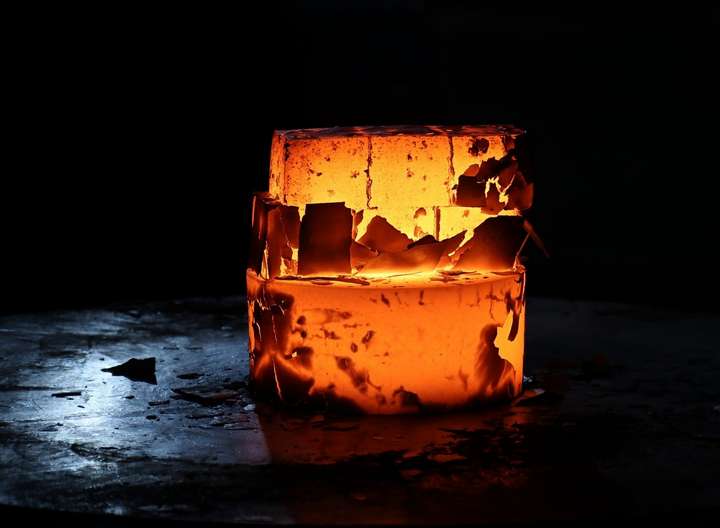Understanding how things are made can sometimes be fascinating. Humans commonly take things for granted in daily life, but scratching the surface and peering underneath can lead to greater understanding.

One thing you almost certainly take for granted is steel. You may use something made of steel while reading this article. A piece of cutlery, perhaps, or the chair you are sitting on.
Due to the manufacturing process, steel is not a pure metal, which means it isn’t even classed as metal but instead an alloy or a variant. Even though you almost certainly have a number of items in your home made of steel, it is likely you don’t fully understand how it is formed.
You can read on to find out how steel is actually made and why this alloy is so important to everyone in daily life and other areas such as construction and transport.
The ingredients needed to make steel
Iron ore and carbon are needed to make steel and several other elements. Iron ore is vital for making this alloy, and there are some mass-producing countries in the world.
The three biggest iron ore producers account for around 69% of all global production. These countries are Australia, China, and Brazil. From all iron reserves available, nearly all goes to manufacturing steel.
An incredible 98% of all iron ore is used to make steel, with the remainder being used for other purposes such as iron oxide.
Aside from carbon and iron ore, several other elements will appear in the alloy when steel is made. These are as below:
- Copper
- Sulfur
- Nickel
- Manganese
- Phosphorous
- Chromium
- Molybdenum
- Boron
- Titanium
Some of these elements, such as titanium and molybdenum, help reduce corrosion in steel. Others, such as manganese, help increase hardness. But, some naturally occurring elements are detrimental to the quality of the steel. Sulfur and phosphorus are far less desirable than a nickel.
What are the steps necessary to make steel?
There are a number of steps required so that steel can be made. There is also more than one method for making steel. The methods used are either through a blast furnace or an electric arc furnace.
The latter method is usually used when special quality steel is required. For instance, they can be used to produce special steel for aerospace requirements. The most common alloy produced this way is stainless steel.
The start of steel making begins at the open pits and mines where carbon and iron are found. These materials will be put into a blast furnace to be turned into molten metal.
The next steps are as follows:
- Initial or primary steel making
- Secondary steel making
- Continuous casting
- Initial forging
- Secondary forging
All of these steps are necessary for creating the alloy that is used in so many different applications. You are certain to have some forged stainless steel in your home, and if you read on, you will find out how it got made.
Initial or primary steel making
The molten metal that is created in the blast furnace needs to have scrap steel added to it. The furnace will force oxygen into and through the molten metal and remove many of the unwanted elements such as phosphorus.
Secondary steel making
You now have basic or raw steel. However, different applications require different grades of steel. It can be used for selected purposes depending on what elements remain in steel.
The secondary steel-making process will lead to whatever graded steel is desired, such as for construction.
Continuous casting
This is where the molten steel is allowed to cool and harden within molds. This will solidify the alloy, and it can be turned into plates.
Initial forging
Hot rolling can be used to further improve the quality of the steel and alter its shape to something more usable.
Secondary forging
Finally, secondary forging is used to make the finished shape needed from the steel. Other processes may take place, such as coating also.
What can steel be used for?
Steel is used everywhere in business, construction, and in the home. Cutlery is the most obvious area where everyone will have something made from steel. There are steel retaining walls in construction, steel is used in medical applications such as scalpels, and it is used in televisions and cars too.
It is also used in pipelines and power cables. The versatility of steel is what makes it so popular and useful across many industries. It can be recycled, so it is an eco-friendly option, and it is resistant to corrosion and doesn’t buckle or warp. This last point is why it is used widely in construction.
Summary
Apparent steel use (or ASU) is a way to calculate the demand for finished and crude steel. Currently, China has the biggest demand for steel and produces far more than even its closest rival.
But steel is used all over the world and will continue to be produced until the day when iron ore reserves run out. However, that is in the distance, and more reserves are likely to be discovered.
Understanding how steel is made may bring a little more appreciation to that fork you are holding. And the applications and uses of this incredible alloy are almost endless.





